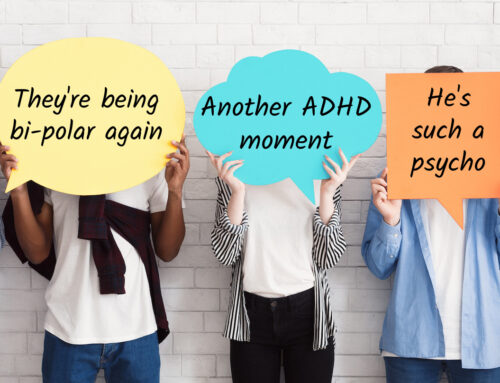There are 48 recognized emotions in the English language according to HUMAINE, a database that catalogues and analyzes human emotion so that we can better learn about it. Today’s post seeks to help you make sense of them all by diving into the concept of primary and secondary emotions. For parents, this concept can radically alter the way you relate to your child. Here’s how:
What are primary and secondary emotions
Primary emotions are your initial reaction to an event or incident. It’s inevitable that when something meaningful happens — good or bad — it triggers a complex cascade of emotions to begin. That first emotion that you feel at the time of the event, the one that is pure feeling without any thoughts attached to it, is the primary emotion. The emotion surprise is the easiest one to use as an example of the unthinking-ness of primary emotions: surprise happens because your brain hasn’t had time to put together the pieces! The common collection of primary emotions is this set of six: sadness, happiness, fear, anger, surprise and disgust.
Then, our good ol’ rational (and irrational) brain kicks in, trying to make sense of our emotional experience. This gives rise to secondary emotions. Secondary emotions are created by thoughts we have about our primary emotions. Oftentimes, these are the feelings that brew while we try to make sense of why we experienced the initial, primary feeling. You might feel the trickling in of shame as you think about why you “shouldn’t” feel angry. Or you might develop anxiety while you try to make sense of your fear. Secondary emotions are really good at taking the wheel and driving our reactions.
Why does this understanding matter?
Learning to spot the difference between primary emotions and secondary ones helps to deepen our understanding of ourselves — but the rest of this post is dedicated to how you can use this as a tool for sharpening your communication with your child.
Knowing the difference between primary and secondary emotions gives you the ability to spot when to ask “where is this reaction coming from?” That question, when posed at the right time, is a doozy — it can reveal to you what your child is confronting deep down, beneath the roiling waves of reactivity.
My child is having an emotional reaction, what should I do?
Here’s how this can help you relate to your child the next time they come home from school in a huff, say something snide, or permeate the house with a bad attitude. Instead of reprimanding your child from the get-go, follow these steps:
-
Pause. Remember that you’re having your own secondary emotional response, too. The hurt you feel from a backhanded comment, the anger over a left behind mess, or fear about your child’s wellbeing can quickly turn into thought-fueled secondary emotions like frustration or anxiety. Take a moment to breathe.
-
Allow. Let your child’s secondary emotion have the limelight for a few minutes! Typically, people want their emotions validated before dissected. Let your child vent, huff, or fret for a bit. After they feel seen for the emotion they are displaying, it will be easier to move into a conversation about the emotion.
-
Identify. Next, help your child name the secondary emotion — the one they are experiencing right now. There are fabulous tools that help people, young and old, develop emotional vocabulary while learning to separate their emotions into primary and secondary.
-
Trace. Trace the emotion back to when it started. Ask, “what was going on immediately before you started feeling this way?” Find the inciting incident, the event that triggered the emotions.
-
Discover. Now you can locate the feeling that came immediately after the inciting incident. It probably feels like it happened concurrently. Ask, “what were you feeling before the talking in your head started?” Name the six primary emotions and ask what resonates.
Keep practicing.
Practices like these can help your child develop deeper emotional intelligence, a skill that will benefit them throughout their life. Another way to look at primary versus secondary emotions is to view the former as the heart and the latter as the brain. This practice can help you relate on a heart-to-heart level. Compassion is a muscle; practices like these are exercise. As always, outside help is available and can be very fruitful as you and your family explore different ways of talking about and confronting emotions. If you want to involve the help of a trained professional, click here.






